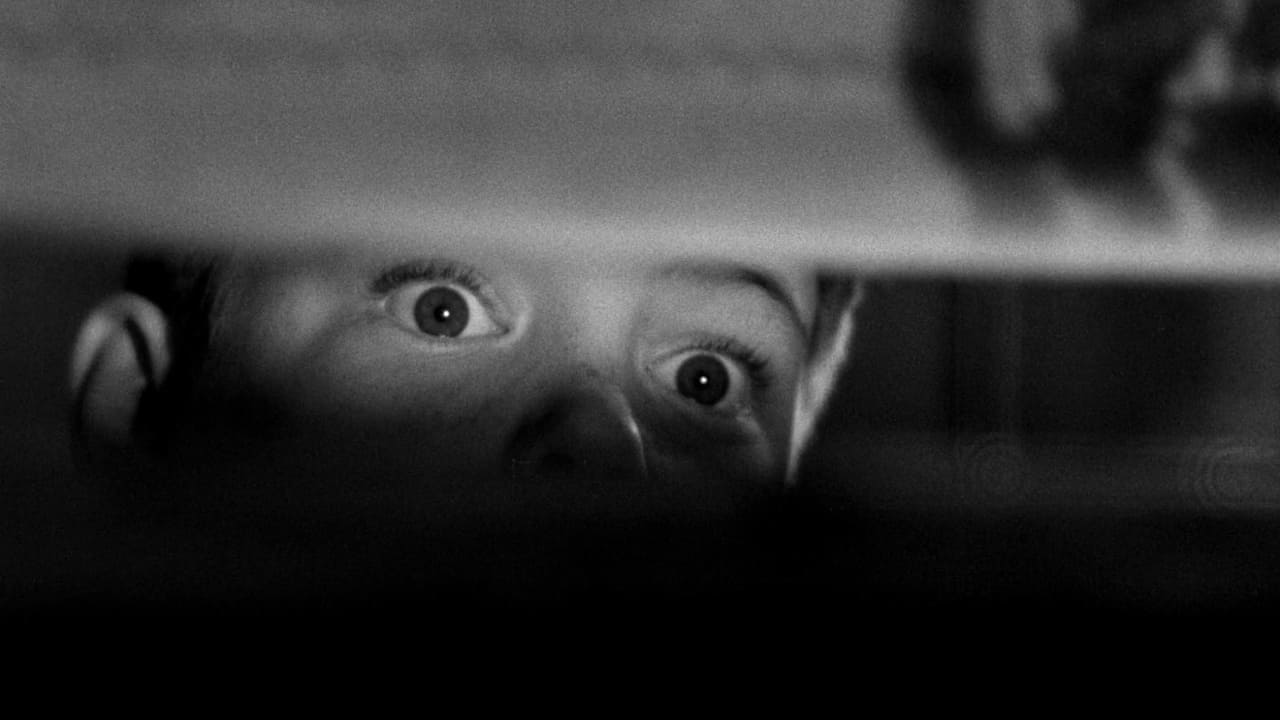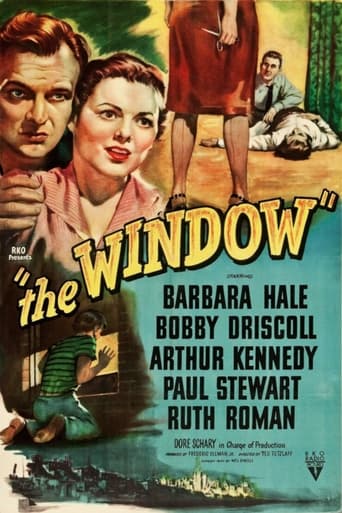




Excellent, a Must See
Brilliant and touching
Clever and entertaining enough to recommend even to members of the 1%
View MoreThis is one of the few movies I've ever seen where the whole audience broke into spontaneous, loud applause a third of the way in.
View MoreThe Window is a story set in New York City in 1949, starring Bobby Driscoll, the child in the movie who played Tommy's character superbly. The nine year old Tommy likes to invent stories that land him in trouble with parents and friends. On a sweltering night, he goes outside on a fire escape to get some sleep. It is there that he witnesses a crime. He tries without success to convince his parents about the crime. We see a child who knows he has misbehaved in the past but is determined to set things right. The parents are just as determined to set the boy right.The characters of Tommy and his parents live in a crumbling tenement building that becomes the scene for a dramatic climax. We witness a cast of characters drawn from a neighbourhood at the time--police officers, mailman, reporter, superintendent etc. We see kids playing in settings that would never meet the standard of today's parents. We witness the hardscrabble life of the boy's parents with the father, played by Arthur Kennedy, working graveyard shifts to support his wife and child living in the small apartment. During this event, the wife/mother, played by Barbara Hale, goes off to help her ailing sister. All in all, a little nugget of film noir. We are transported to a way of life many can still relate to with characters and settings from the time.
View MoreThe tenements of New York City come to life in this tense film noir where the protagonist is an adolescent who starts off as the antagonist. Pre-teen Bobby Driscoll makes up stories with the frequency of a gossip columnist, usually involving his innocent neighbors. This gets his parents (Barbara Hale and Arthur Kennedy) in trouble, and they wonder how to handle his tall tales. It goes from bad to worse on a hot summer night when Driscoll climbs up to the top of the fire escape where he witnesses the married couple on the top floor having an argument with the stranger, and the husband stabbing the man to death. Stunned by viewing this, Driscoll rushes to tell his parents who of course do not believe him. After running to the police to tell him of what he witnessed, Driscoll is forced by his mother to apologize to the killer's wife and he becomes paranoid that the neighbors will target him next. When he is left alone by his working father while his mother is tending a sick relative, Driscoll's worst nightmare comes true when real danger shows its ugly face.The dark set of the slums take on a look of character (and almost becomes a character itself) as Driscoll tries to save himself, and the photographer and editor work overtime to create a tension that is often frightening and seldom surpassed by other similarly filmed stories. Children rarely get the focus in such a tale, and of course, the psychological ramifications of why he lies in the first place is dealt with, and how his parent's daily distractions make him feel neglected. This is a "sleeper" of film noir greatness, an extremely short motion picture that shows good things come in small packages and that frequently, less is often more.
View MoreIn its day (it was made in 1947 around the time Howard Hughes bought RKO and in his wisdom he had it shelved until, short of product in 1949, it was finally released) this must have been highly effective. Watching it today it is easy to compare it with Rear Window and watch it come off worse but Rear Window had a budget arguably 20 to 30 times that of The Window, it was shot in color, had Internationally known stars - James Stewart, Grace Kelly - plus an Internationally celebrated (albeit vastly overrated) director, Alfred Hitchcock. The irony is that both films were based on stories by William Irish/Cornell Woollrich. Okay, to rack up the tension it is necessary to have the father (Arthur Kennedy) work nights and the mother (Barbara Hale) leave the nine-year-old boy (Bobby Driscoll) alone in the apartment AFTER the two killers (Paul Stewart, Ruth Roman) on the floor above KNOW that he saw them kill the sailor. As well as this in 1949 no one was wondering aloud what a sailor was doing in a strange apartment in the first place (apart from getting rolled by Roman, that is); it's clear that Roman was a hooker, or at least had picked up the sailor and led him to believe she would have sex with him because nothing else makes sense. Chances are she and Stewart did this on a regular basis but this time it went wrong. It packs a lot into 79 minutes and the acting is, if anything, superior to that in Rear Window. Well worth the price of a DVD.
View MoreYoung Bobby Driscoll (Tommy) makes up stories to his friends and to his parents. One night, he sleeps on the fire escape outside the apartment of Paul Stewart (Mr Kellerson) and Ruth Roman (Mrs Kellerson) where he witnesses them commit a murder. When he tells his parents Arthur Kennedy and Barbara Hale about it, they dismiss him. In fact, they punish him. Even the police don't believe him when he reports the murder to them. Poor kid. No-one believes him. It's not long before Paul Stewart and Ruth Roman find out that he knows something and set a plan in motion to silence him.There are many tense scenes as Driscoll faces his nightmare all alone. The audience shares his fear as the killers have him next on their list. The acting is realistic as is the dialogue. The film also has eerie sections (eg, Ruth Roman outside Driscoll's window with a torch as he hides in his locked room) and dramatic moments (eg, when the killers kidnap Driscoll and put him in the back of a cab and they encounter a policeman). The strategy that Paul Stewart and Ruth Roman use to shut him up during the cab ride is genius. It's very funny and demonstrates perfect teamwork.Children are usually annoying in films. Not here. A dramatic ending in a disused apartment block adds to the tension. Worth watching again. The way the movie is filmed and the location all add to the experience of a film that is actually quite scary in parts.
View More